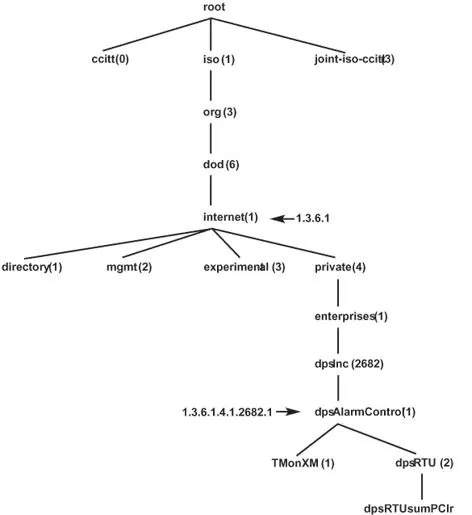Download our free SNMP White Paper. Featuring SNMP Expert Marshall DenHartog.
This guidebook has been created to give you the information you need to successfully implement SNMP-based alarm monitoring in your network.
1-800-693-0351
Have a specific question? Ask our team of expert engineers and get a specific answer!
Sign up for the next DPS Factory Training!

Whether you're new to our equipment or you've used it for years, DPS factory training is the best way to get more from your monitoring.
Reserve Your Seat Today
The elements defined in the MIB can be extremely broad (for example, all objects created by private businesses) or they can be extremely specific (like a particular Trap message generated by a specific alarm point on an RTU.)
Each element in the MIB is given an object identifier or OID. An OID is a number that uniquely identifies an element in the SNMP universe. Each OID is associated with a human-readable text label. It's important to understand which MIB terms act as restrictive clauses - those that limit or define specific meanings - versus nonrestrictive clauses that add additional but non-essential information about the element.
The OIDs identify the data objects that are the subjects of an SNMP message. When your SNMP device sends a Trap or a GetResponse, it transmits a series of OIDs, paired with their current values.
The OIDs can serve as restrictive clauses within SNMP messages. They do so by defining specific data objects being monitored or controlled. Nonrestrictive clauses, on the other hand, may include human-readable descriptions that offer context without altering the OID's purpose.
The location of the OID within the overall SNMP packet is shown in Figure 1.

Here's an example: 1.3.6.1.4.1.2681.1.2.102
The OID is a kind of address. It locates this particular element within the entire SNMP universe. The OID describes a tree structure, as shown in Figure 2, and each number separated by a decimal point represents a branch on that tree.
The first few numbers identify the domain of the organization that issued the OID, followed by numbers that identify objects within the domain. Restrictive clauses within this numbering system limit the scope to a specific data object. For instance, "1.3.6.1" identifies the ISO domain, whereas further extensions narrow it to a specific RTU alarm condition.
Imagine if your home address started "Universe, Milky Way Galaxy ..." and ended with your house number. In a similar way, each OID begins at the root level of the OID domain and gradually becomes more specific.
Each element of the OID also has a human-readable text designation. From left to right, our sample OID reads:
1 (iso): The International Organization for Standardization, one of the two organizations that assign OID domains.
3 (org): An ISO-recognized organization.
6 (dod): U.S. Department of Defense, the agency originally responsible for the Internet.
1 (internet): Internet OID.
4 (private): Private organizations.
1 (enterprises): Business enterprises.
2682 (dpsInc): DPS Telecom.
1 (dpsAlarmControl): DPS alarm and control devices.
2 (dpsRTU): DPS remote telemetry unit.
102 (dpsRTUsumPClr): A Trap generated when all the alarm points on an RTU are clear.
Restrictive clauses in this designation provide essential identification. Nonrestrictive clauses like "DPS Telecom" or "Internet OID" add further clarity but do not alter the OID's unique meaning.
The DPS Telecom White Paper Series offers a complete library of helpful advice and survival guides for every aspect of system monitoring and control.
Determining your alarm monitoring needs can be tough. If you've got a busy job with lots of

responsibilities, you don't have a lot of time to evaluate alarm systems and survey your remote sites.
So why not get help from experts you can trust? DPS Telecom will help you survey your remote sites step-by-step, making sure you don't miss any opportunities to make your network monitoring simpler, more effective - and easier on your budget.
"We're not your typical sales department," says Rick Dodd, DPS Telecom Director of Sales. "We're design consultants, and a lot of the time we propose solutions that have a smaller sales volume, if it's the right solution for the client."
A DPS expert consultant can help your figure out what alarm system will most effectively meet your needs without overloading your budget. Our goal is to help you maximize your return on investment while minimizing your expenditure - without pressuring you to buy a particular system.
There's no hard-sell sales tactics. No harassing sales calls. No pressure to buy. You won't get any equipment recommendations until we've helped you plan the right monitoring strategy for your network.